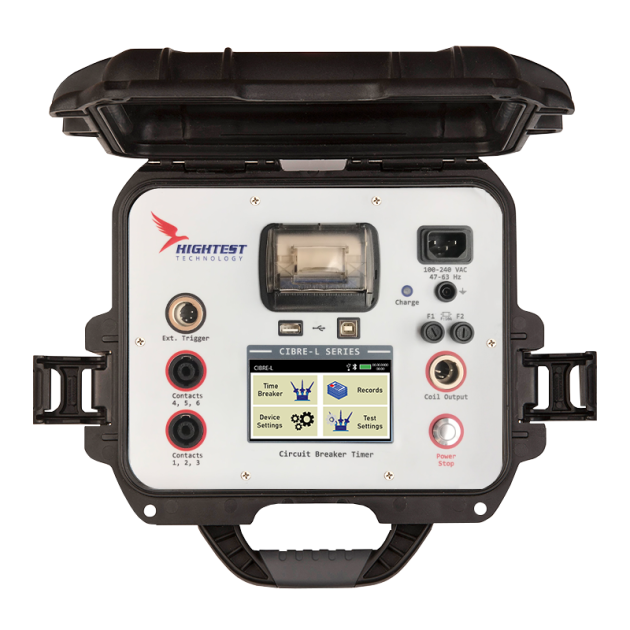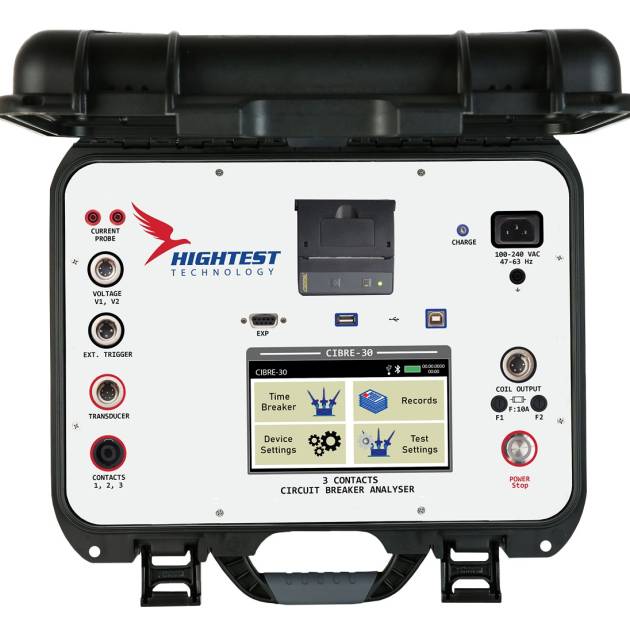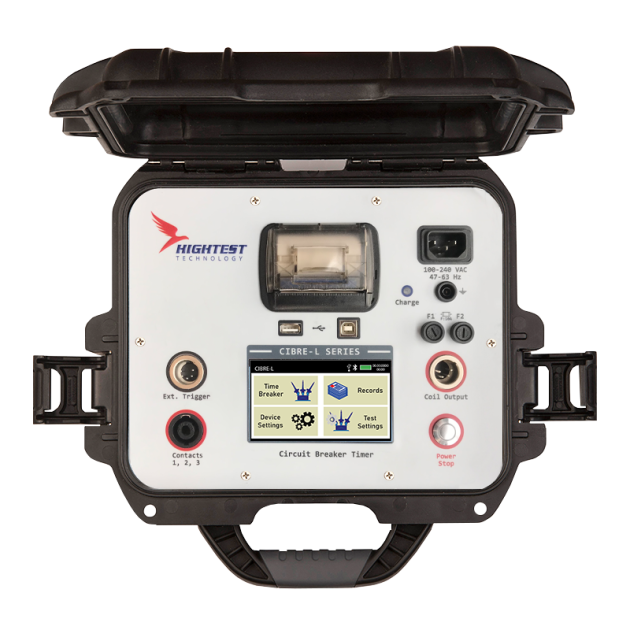Description
Why test circuit breakers?
It is very important to test circuit breakers regularly. Contact Timing Tests and Motion tests are performed to determine the optimal performance of the breakers. The testing can determine improper breaker operations in case of system fault and to improve system reliability.
Contact Timing Tests
Contact timing tests are performed to compare the breakers’ main & resistor contact performance against the manufactures specifications. The breakers OPEN, CLOSE, OPEN-CLOSE, CLOSE-OPEN & OPEN-CLOSE-OPEN operations are timed in milliseconds (ms) and cycles and then compared with the manufacturers’ specification to determine the performance of the circuit breaker.
Motion Tests
CIBRE-60 can use to perform motion tests such as Transducer Speed, Stroke and Bounce. Slower transducer speed can reduce the breaking capacity of the main contact while faster speed can cause mechanical damage to the damping components and cause excessive vibration. So it is necessary to test the transducer speed to compare it with manufacture’s specifications.
CIBRE-60 features with a 7-inch large colour touch display, which is visible under both bright sunlight as well as dim light conditions. With the HighTest Data Management Platform (DMP Software), users can analyse and manage measurement results on PCs. Operators can easily print the measurement results with the 2.25-inch built-in printer of CIBRE-60. The results can also save to a USB flash drive or to the device’s internal memory.
Multi-language capability and user-friendly operation menu make it easy to control CIBRE-60. CIBRE-60 is a light-weight, compact and rugged device with the protection of IP67 (case closed) which makes it perfect for the field test.
TECHNICAL SPECIFICATIONS
| Measurement Parameters | Contact Timing (O, C, O-C, C-O & O-C-O), Motion Tests (Transducer Speed, Stroke, Bounce) | |||
| Dry Contact Inputs | 6 dry input channels (each detects main) and insertion resistor contacts | |||
| Timing Windows | 1s, 10s, 20s | |||
| Timing Resolution | 1 s duration | 10 s duration | 20 s duration | |
| ± 50 µs | ± 500 µs | ± 1 ms | ||
| Timing Accuracy | 0.05% rdg ± 0.1 ms | |||
| Dry contact channel protection | Fuses and Diodes protection, All contacts grounded until Test | |||
| Contact detection range | Closed | ≤20 Ω | ||
| Open | ≥5000 Ω | |||
| Resistor detection range | 20Ω – 5000Ω | |||
| Trigger input voltage | 24 – 300 V DC or ACpeak | |||
| Dry contact input protection | Diode Protection/ FSD | |||
| Breaker Operations | OPEN, CLOSE, OPEN-CLOSE, CLOSE-OPEN, OPEN-CLOSE-OPEN | |||
| Voltage sensing input range | V1 (Analogue Input) | V2 (Presence/Absence Detector) | ||
| 0 – 250 V DC or ACpeak | 24 – 300 V DC or ACpeak | |||
| Breaker Initiate Capacity | 20 A, 300 V DC or ACpeak | |||
| Digital Travel Transducer Input | 5V/12Vdc TTL | |||
| Initiate current reading range | 0 – 20A DC, 5 kHz | |||
| Input Power | 100-240 V, 47/63 Hz | |||
| Built-in Battery | Yes, 14.4 V 6.9 Ah (option) | |||
| Display | 7-inch Colour Touch Display | |||
| Memory | Up to 200 records | |||
| printer | 2.28 inches Built-in Printer | |||
| PC Software | DMP Software (Windows 10) | |||
| Dimensions | 16.9″ x 12.9″ x 9.3” (429 mm x 328 mm x 236 mm) | |||
| Weight | 8.2 kg with battery | |||
| Communication | USB 2.0/1.1 Standard-A, USB 2.0/1.1 Standard-B, Bluetooth (factory install option) | |||
| Working Temperature | -10 °C to + 60 °C | |||
| Humidity | 90% RH non-condensing | |||
| Protection Class | IP67 (case closed) | |||





Reviews
There are no reviews yet.